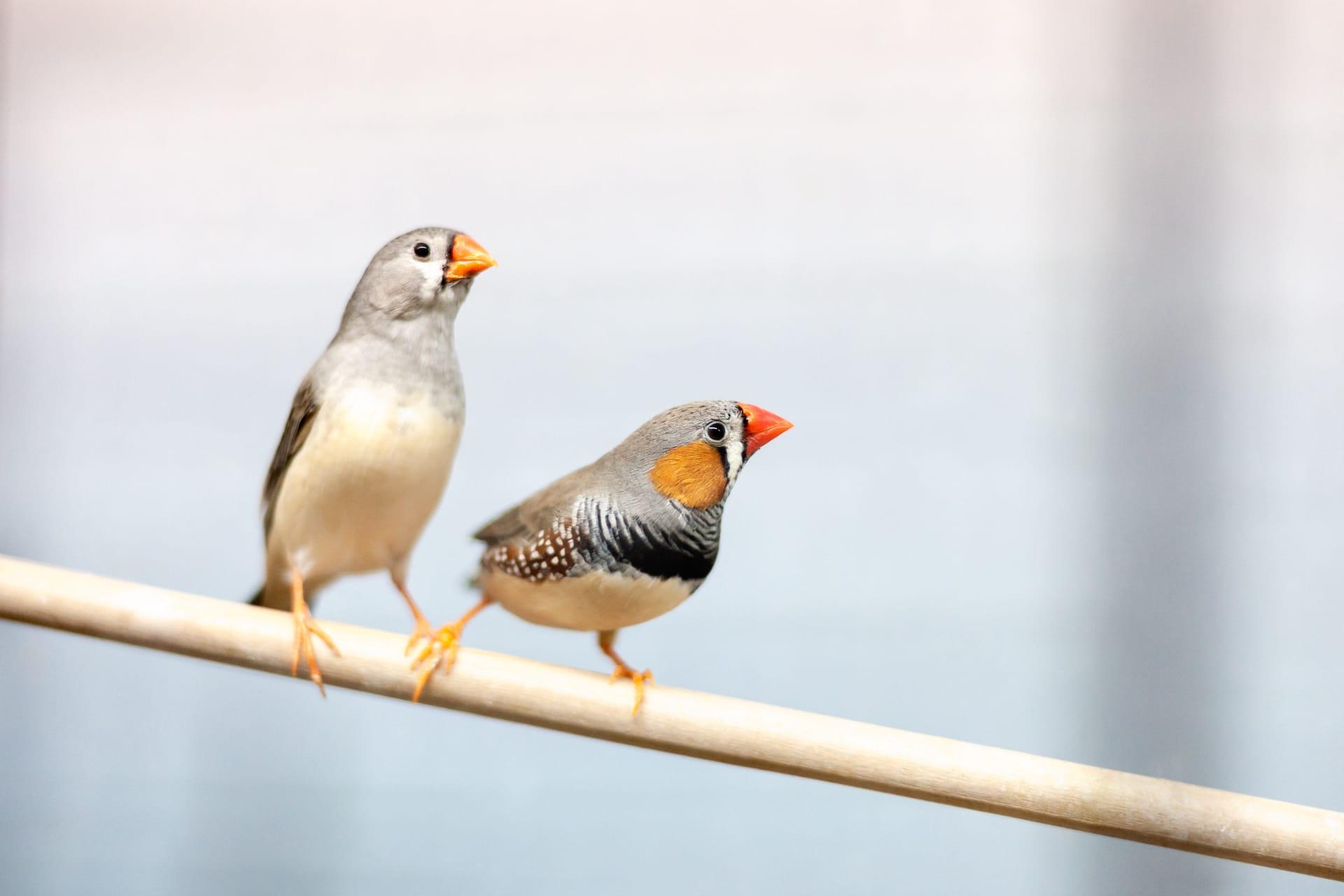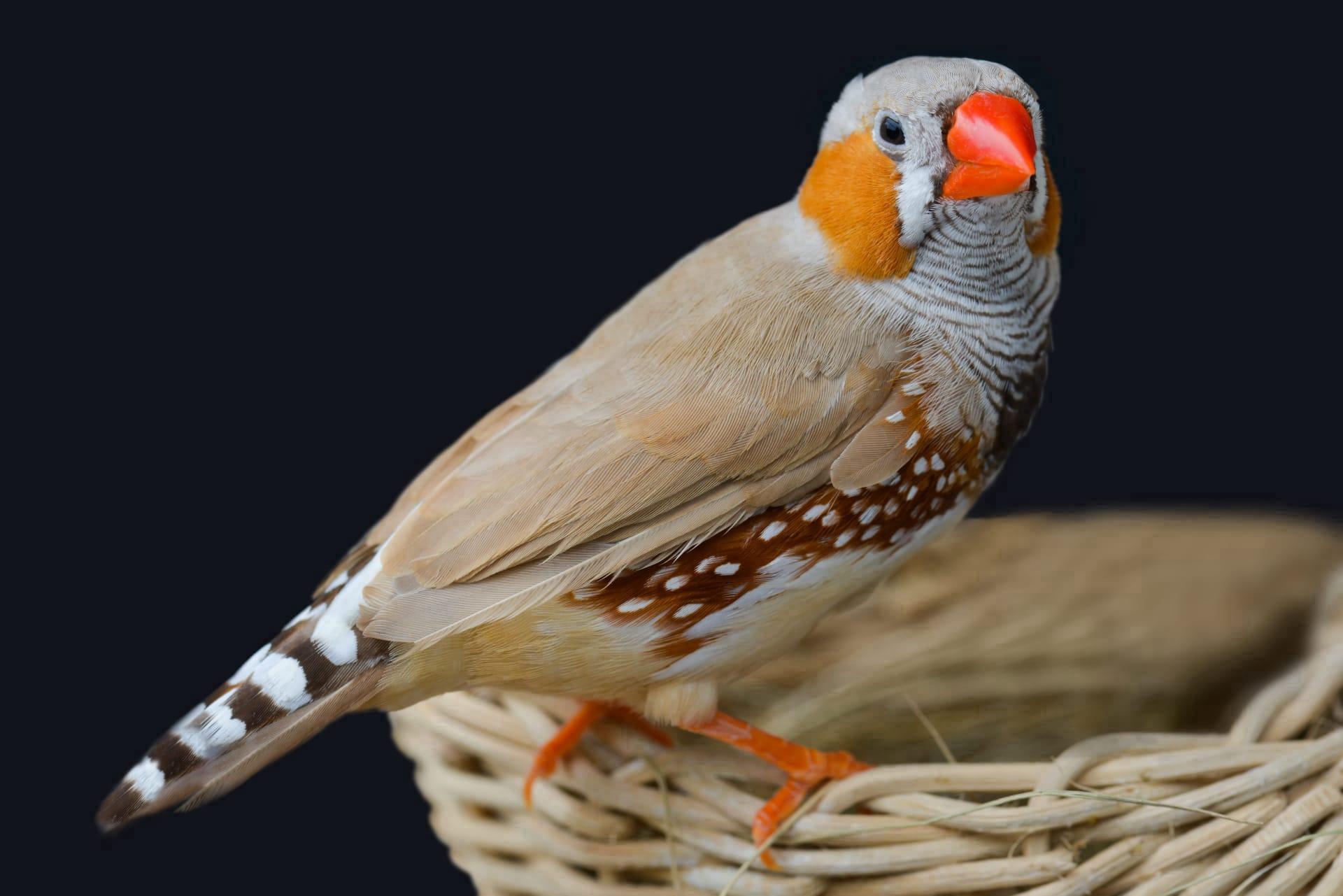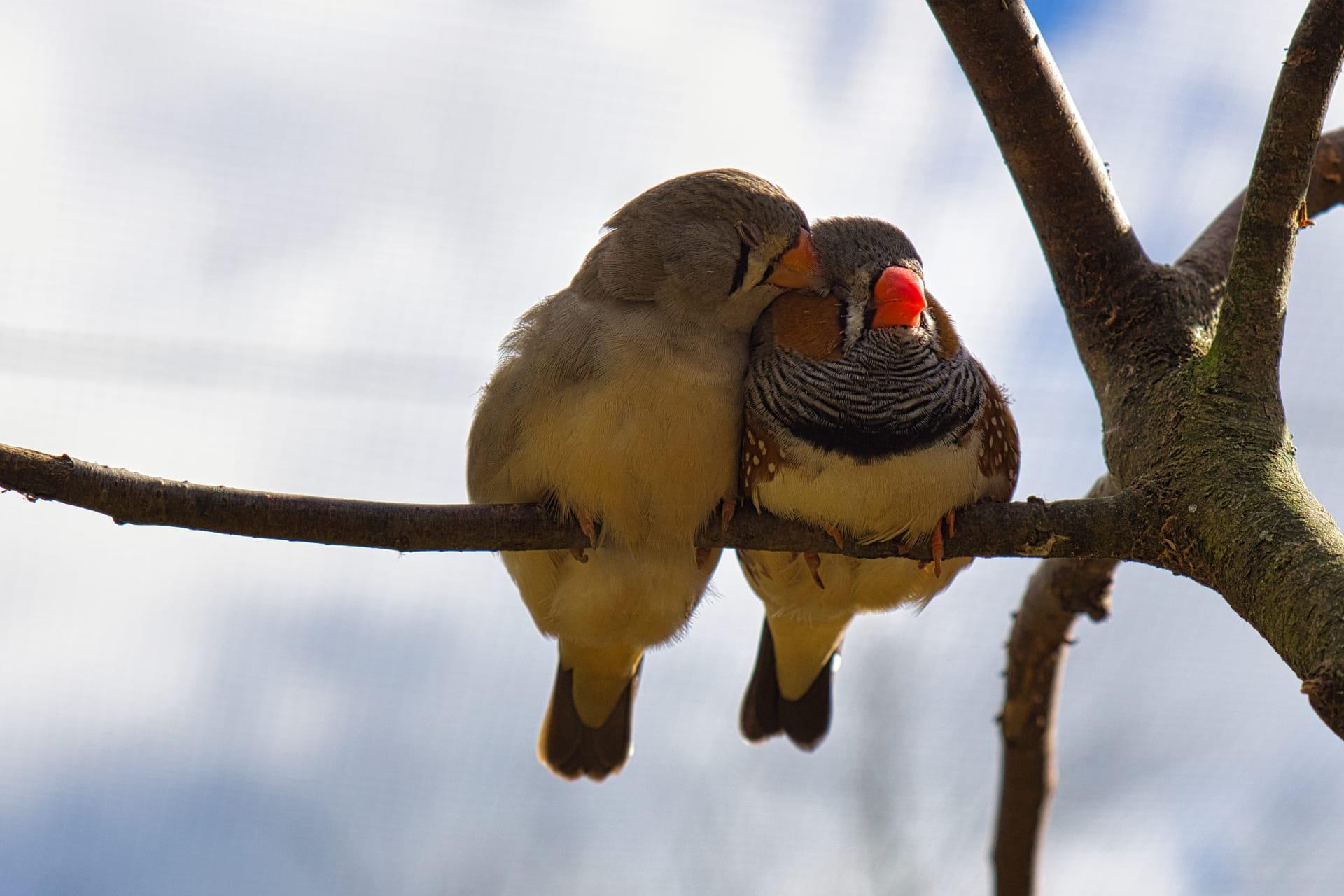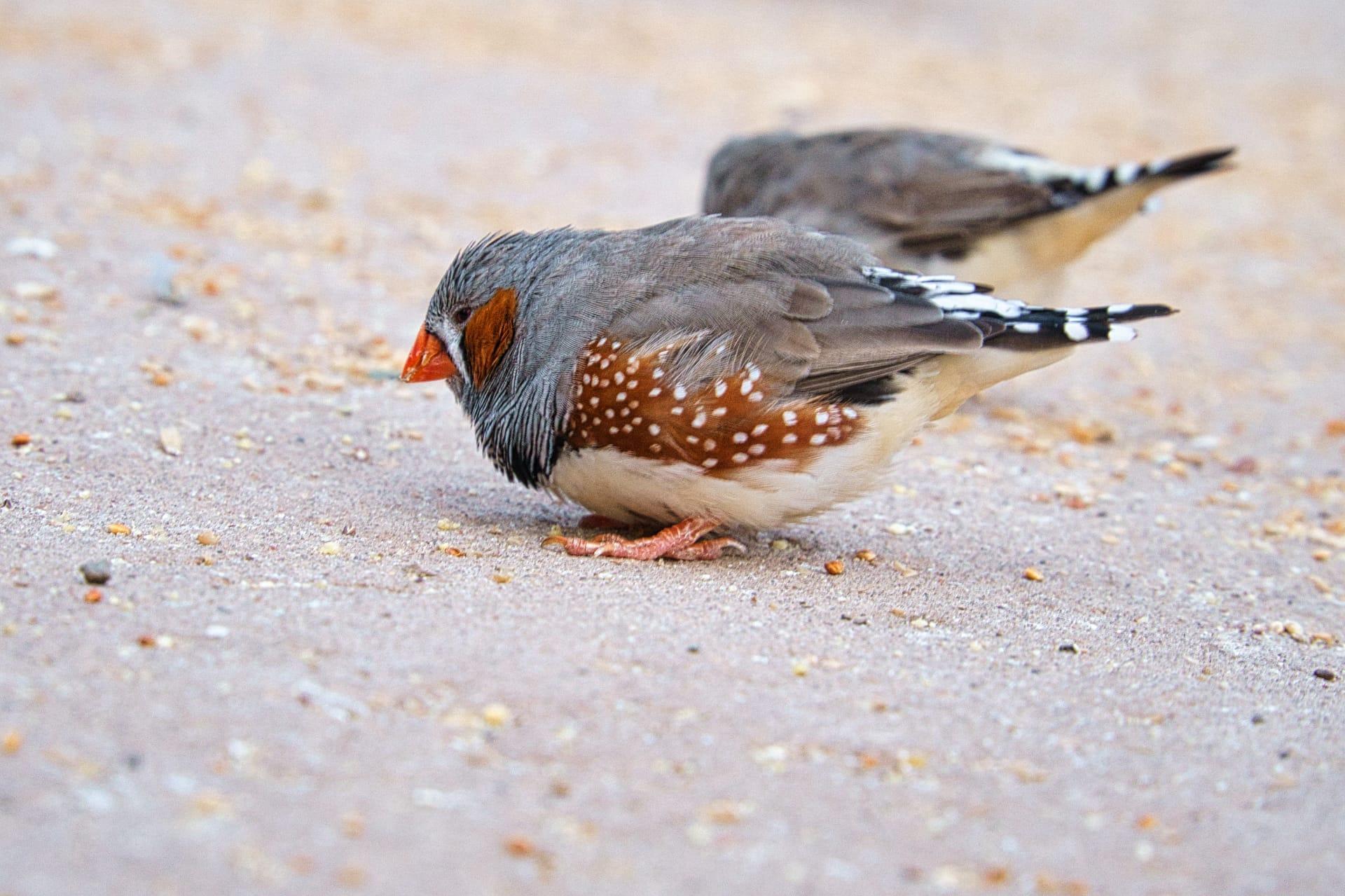Zebra Finch Characteristics
- Home /
- Mini Encyclopedia /
- Animal /
- Zebra Finch Characteristics
1
Zebra Finches, small birds with a big personality, are a wonder of nature. Averaging about 4 inches in length, these birds are compact but packed with charm. Their lifespan is remarkable for their size, typically ranging between 5 to 9 years in captivity. With a distinctive appearance, they flaunt a mix of gray, white, and black with cheeky orange patches on their cheeks. The males are particularly flashy with their striking black and white striped throats—hence the name Zebra Finch.
The syrinx, a specialized organ unique to birds, is the star feature in Zebra Finches. Unlike our larynx, the syrinx is located where the trachea splits into the lungs, allowing these birds to produce complex and melodious sounds. It's their vocal cords but better! This organ is key to their social interactions, with males using their diverse range of songs to woo females and communicate. The ability of Zebra Finches to change and adapt their songs makes their syrinx a remarkable tool for social bonding and survival.

2
Question: What do Zebra Finches eat?
Answer: Zebra Finches are not fussy eaters. In the wild, their diet mainly consists of seeds, which make up about 50% of their intake. They also munch on grasses and occasionally enjoy insects, providing essential proteins. In captivity, a balanced diet for these finches includes high-quality finch seed mix, fresh vegetables, and a small portion of fruits. It’s important to note that fresh water should always be available, and foods high in fat or sugar are a no-no to keep them healthy and active.

3
Zebra Finches are energetic and agile. In the wild, they are frequently seen hopping around or flying in short, swift bursts. Their flight is characterized by a series of rapid wingbeats followed by a quick glide, showcasing their adeptness in air navigation. These movements are essential for evading predators, social interaction, and searching for food.
When it comes to hunting, Zebra Finches are primarily ground foragers. They skillfully use their beak to pick seeds and peck at insects. Their foraging technique is a delicate balance of pecking and sifting, efficiently separating edible parts from chaff. This behavior is complemented by their keen eyesight and quick movements, making them proficient hunters in their natural habitat.

4
The natural habitat of Zebra Finches spans across the arid and semi-arid regions of Australia. They thrive in a variety of environments from grasslands to forests, often near water sources. Their adaptability to different environments is key to their survival, allowing them to nest in trees, bushes, or even man-made structures.
Zebra Finches are socially monogamous and known for their prolific breeding. They breed throughout the year, with a peak in the wet season. Their nests are crafted from grasses and feathers, often built in community with other finches. Females typically lay 4 to 6 eggs, which are incubated for about two weeks. Both parents participate in raising the young, which fledge the nest around 3 weeks of age. Their social structure and cooperative breeding behavior are fascinating aspects of their reproductive life.

5
Book: "The Zebra Finch: A Synthesis of Field and Laboratory Studies" by David T. Parkin. This book, published in 1996, provides a comprehensive look at the life of Zebra Finches. Parkin, a renowned ornithologist, combines field observations with laboratory research to present a detailed study of these birds. Covering aspects from their social behavior to genetics, it's a valuable resource for both professional ornithologists and bird enthusiasts.
Book: "Zebra Finches: Everything About Housing, Care, Nutrition, Breeding, and Diseases" by Hans-Jürgen Martin. Published in 1998, this book is a practical guide for those interested in keeping Zebra Finches as pets. Martin, with his extensive experience, offers insights into the proper care, diet, and breeding of these birds. The book is known for its easy-to-understand language and useful tips, making it a favorite among pet owners and hobbyists.